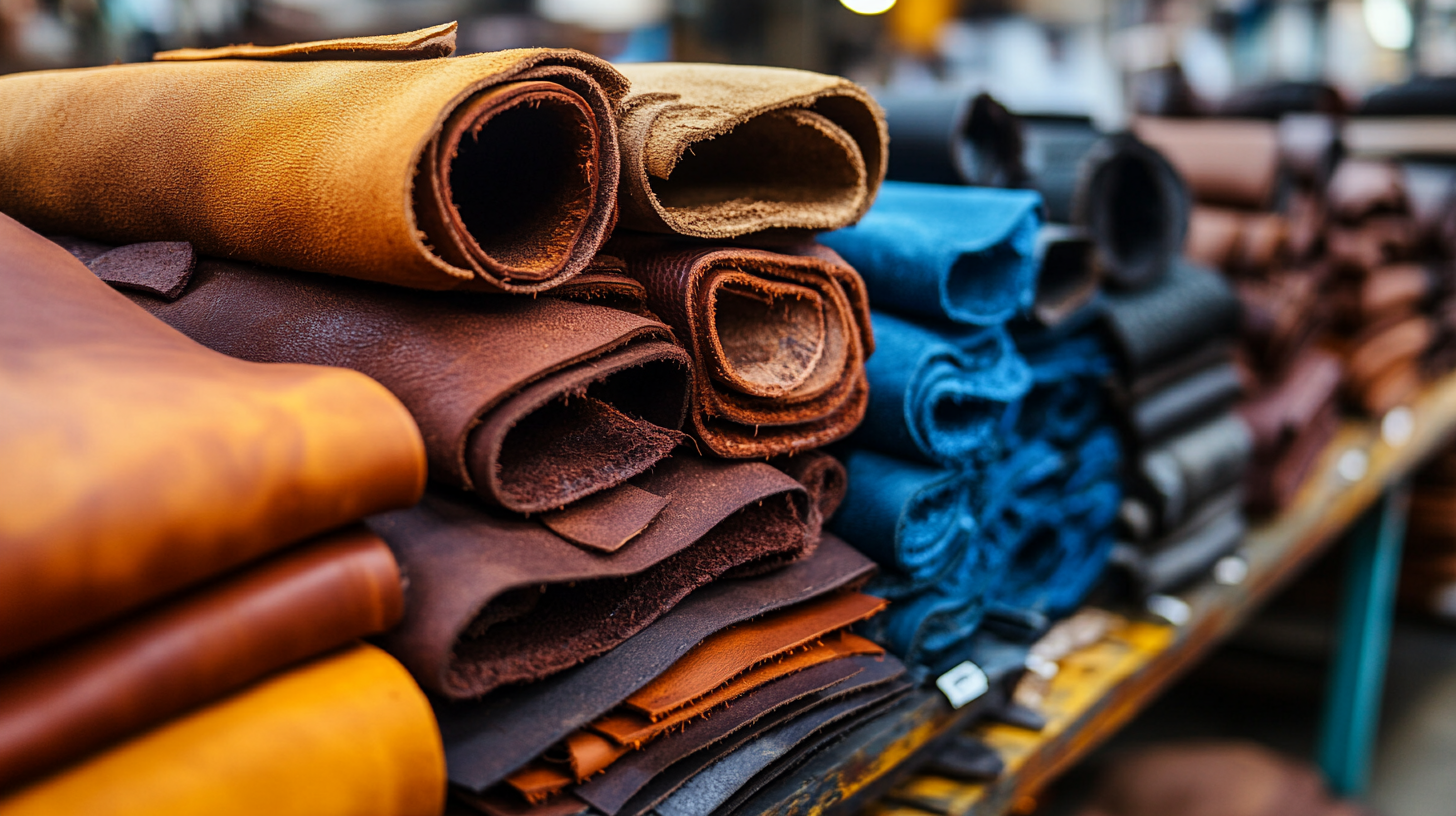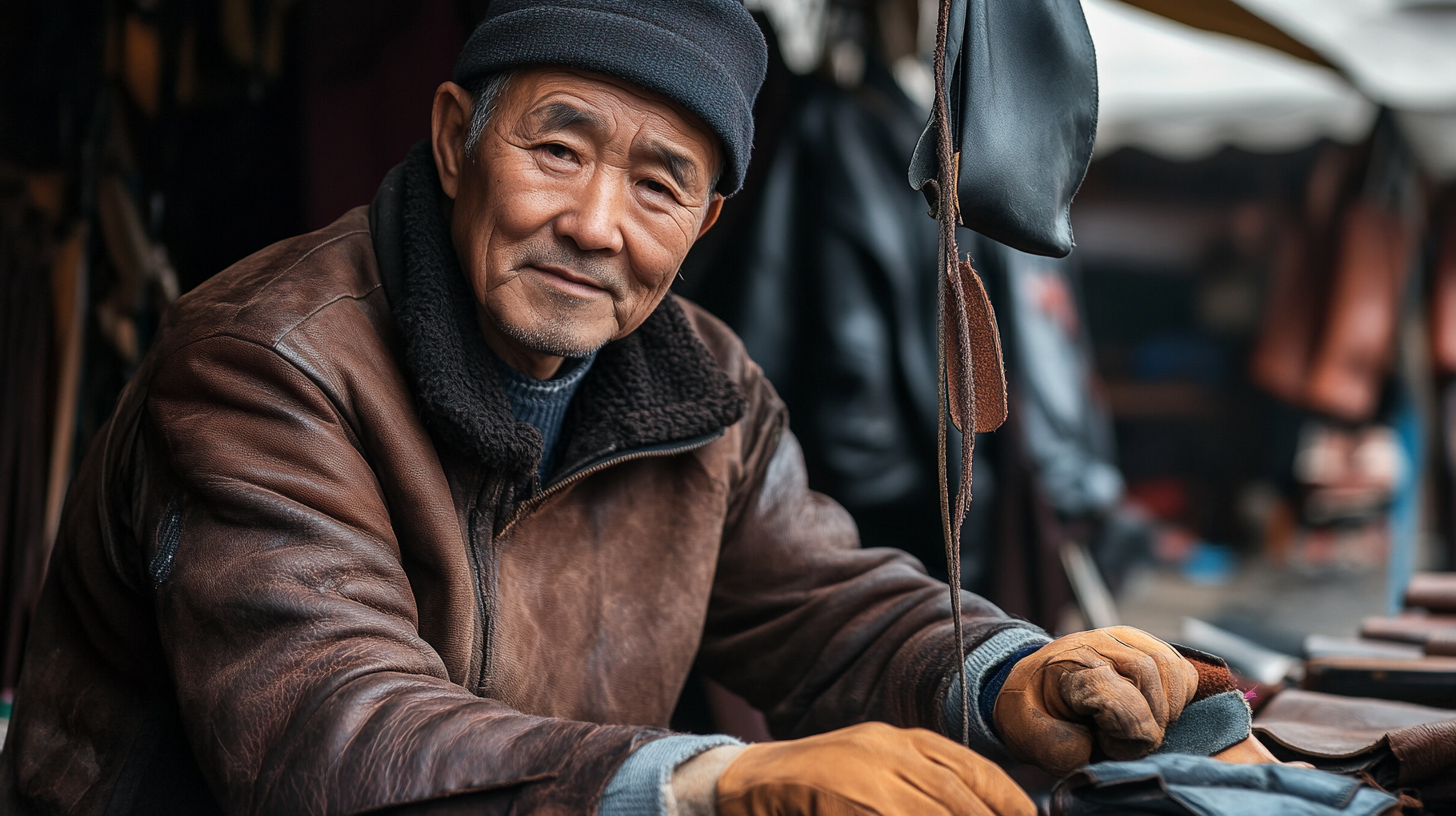China Leather Goods Thrive Amidst US China Tariff Challenges
In recent years, the global trade landscape has been significantly influenced by the complex dynamics between the United States and China, particularly in the realm of tariffs. As these two economic giants navigate their challenges, one sector that continues to flourish is the leather goods industry. This resilience is particularly evident for Chinese leather product manufacturers, who have adeptly adapted to the shifting trade policies. Despite the imposition of tariffs that could stifle growth, these manufacturers have found innovative ways to compete in the international market, leveraging their skills, craftsmanship, and a strong supply chain. As we delve into the strategies and successes of China’s leather goods sector, we will explore how these manufacturers are not only surviving but thriving amidst adversity, showcasing the agility and determination that characterize this vibrant industry.

The Resilience of China’s Leather Goods Industry Amid Tariff Pressures
China’s leather goods industry has demonstrated remarkable resilience amidst the ongoing tariff pressures from the US-China trade relationship. While many luxury brands have grappled with increasing import duties on their products, leading to higher operational costs and pricing challenges, Chinese manufacturers have adapted swiftly. By focusing on innovation and quality, they continue to thrive, capitalizing on the growing demand from both domestic and international markets. This surge in local consumption is a determining factor allowing the industry to navigate through adversity effectively.
Tip: For businesses in the leather goods sector, it's essential to diversify supply chains to mitigate risks related to tariff fluctuations. Establishing partnerships with local suppliers can enhance resilience against geopolitical uncertainties. Additionally, investing in technology and design can elevate products, ensuring they meet evolving consumer preferences.
As the fashion landscape shifts, the ability to maintain competitive pricing without compromising quality will be crucial. China’s leather industry is not only looking inward but also setting its sights outward, seeking new markets and opportunities. Brands that can innovate while maintaining cost-effectiveness stand to benefit most in this tumultuous environment.
Tip: Regularly assess the market trends and consumer behavior to stay ahead of the competition. Engaging with customers through feedback will enable brands to pivot quickly and align their strategies with market needs.
China Leather Goods Thrive Amidst US China Tariff Challenges
| Year | Leather Goods Export Value (USD Billion) | Growth Rate (%) | Major Export Markets | Challenges Faced |
|---|---|---|---|---|
| 2018 | 40 | N/A | USA, EU, Japan | Tariffs, Competition |
| 2019 | 42 | 5.0 | USA, EU, Japan | Tariffs, Regulatory Changes |
| 2020 | 35 | -16.7 | USA, EU, Japan | COVID-19 Pandemic, Tariffs |
| 2021 | 50 | 42.9 | USA, EU, Japan | Resilience, Supply Chain Issues |
| 2022 | 55 | 10.0 | USA, EU, Japan | Tariffs, Market Volatility |
| 2023 (Projected) | 60 | 9.1 | USA, EU, Japan | Increasing Tariffs, Competitor Pricing |
Analyzing Export Trends: China’s Leather Goods Success Against US Tariffs
China's leather goods industry has shown remarkable resilience amidst the mounting challenges posed by U.S. tariffs. Recent reports reveal that the overall export of leather goods from China reached approximately $25 billion in the past year, reflecting a growth rate of 15% despite the 54% tariffs imposed on certain categories by the U.S. government. An analysis of trade trends indicates that while traditional export markets have been pressured, Chinese manufacturers have pivoted towards diversifying their supply chains and enhancing product quality to maintain competitiveness.
Moreover, the shift in sourcing habits by many brands is evident, as they look towards alternative production locations to mitigate tariff impacts. Reports indicate that China is actively exploring new markets in Southeast Asia and Africa, aiming to offset losses caused by diminished exports to the U.S. This strategic repositioning is crucial, as exports to the U.S. accounted for nearly 30% of the total leather goods sold abroad before the tariff escalation began. The adaptability of Chinese firms, coupled with substantial investments in technology and sustainability practices, positions them strongly in the global leather market, even as the trade landscape continues to evolve.

Consumer Behavior Shifts: The Rise of Chinese Leather Goods in Global Markets
The global leather goods market is witnessing a significant transformation, driven largely by changing consumer behaviors in China. As local brands gain prominence and quality improves, Chinese consumers are increasingly embracing domestic leather products. This shift is influenced by a rising appreciation for craftsmanship and brand authenticity, setting the stage for local labels to thrive despite external tariff challenges.
The evolving preferences of Chinese consumers also reflect broader trends in the luxury market, particularly as the younger generation, notably Gen Z, becomes a powerful buying force. These consumers prioritize unique experiences and sustainable practices, paving the way for innovative marketing strategies that resonate with their values. As international luxury brands scramble to capture this lucrative demographic, Chinese leather goods are positioned to carve out a significant niche, reshaping global market dynamics moving forward.

Future Projections: Growth Forecasts for China’s Leather Goods Sector
China’s leather goods sector is poised for notable growth despite the ongoing challenges posed by tariffs from the United States. According to market projections, the global synthetic leather market is expected to expand significantly, with its size projected to increase from $3.45 billion in 2022 to $4.62 billion by 2030. This reflects a compound annual growth rate (CAGR) of 4.0% from 2024 to 2030. The increasing demand for both traditional leather items and their synthetic counterparts showcases a shift towards versatile and sustainable material options in the fashion industry.
Furthermore, the International Monetary Fund (IMF) has revised its economic growth forecast for China, now predicting a 5% growth rate for 2024. While this indicates a positive outlook for the broader economy, the IMF has raised questions regarding the sustainability of China’s reliance on an export-driven growth model. This uncertainty may lead to a strategic pivot within the leather goods sector as manufacturers adapt to changing economic policies and consumer preferences. As the industry navigates these dynamics, it stands on the cusp of significant transformation and opportunity.
China Leather Goods Growth Forecast (2023-2028)
Innovation and Sustainability: Key Drivers Behind China's Leather Goods Growth
Navigating through the challenges posed by the US-China tariff disputes, China's leather goods industry has not only adapted but also flourished. Central to this remarkable growth are the themes of innovation and sustainability. As the market shifts, manufacturers and designers have embraced modern technologies and sustainable practices to enhance product quality and differentiate themselves in a competitive landscape.
Incorporating recycled materials and eco-friendly production methods, Chinese leather goods brands are responding to the increasing consumer demand for sustainable products. This commitment to environmental responsibility resonates with a global audience, leading to a rise in both domestic and international sales. Moreover, innovations in design and production processes allow these brands to introduce unique and trendy items that captivate the market. By prioritizing sustainability and embracing innovation, China's leather goods sector is paving the way for long-term success amid economic challenges.
The interplay of creativity and ecological consciousness not only strengthens the industry but also positions China as a leader in the global leather market. As these brands continue to evolve, they symbolize a shift towards a more responsible and innovative future, showcasing that growth in today's economy can be achieved without compromising on ethical practices.

